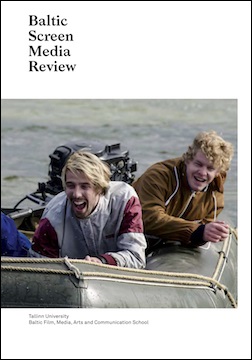Bodily Violence and Resistance in Wojtek Smarzowski’s Rose (Róża, 2011)
Bodily Violence and Resistance in Wojtek Smarzowski’s Rose (Róża, 2011)
Author(s): Elżbieta OstrowskaSubject(s): Gender Studies, Studies in violence and power, Victimology, Fascism, Nazism and WW II, Film / Cinema / Cinematography, Sociology of Art, History of Art
Published by: Tallinna Ülikooli Balti Filmi- ja Meediakool
Keywords: Wojtek Smarzowski; Rose; film; cinematography; World War II; female victims; suffering and death; female war experience; gender; violence;
Summary/Abstract: The article argues that Wojtek Smarzowski’s film Rose (Róża, Poland, 2011) undermines the dominant bigendered logic of screen death and suffering in the Polish films depicting the experience of World War II. In these films, there is a significant absence of images of female suffering and death, which is striking when compared to the abundant images of wounded and dying male bodies, usually represented as a lavish visual spectacle. This unrepresented female death serves as a ‘structuring absence’ that governs the systematic signifying practices of Polish cinema. Most importantly, it expels the female experience of World War II from the realm of history to the realm of the mythical. This representational regime has been established in the Polish national cinema during the 1950s, especially in Andrzej Wajda’s films, and is still proving its longevity. As the author argues, Smarzowski’s Rose is perhaps the most significant attempt to undermine this gendered cinematic discourse. Specifically, the essay explores the ways in which Smarzowski’s Rose departs from previous dominant modes of representation of the World War II experience in Polish cinema, especially its gendered aspect. Firstly, it examines how Rose abandons the generic conventions of both war film and historical drama and instead, utilises selected conventions of melodrama to open up the textual space in which to represent the female experience of historical events. Then the author looks more closely at this experience and discusses the film’s representation of the suffering female body to argue that it subverts the national narrative of the war experience that privileges male suffering. A close analysis of the relationship between sound and image in the scenes of bodily violence reveals how the film reclaims the female body from the abstract domain of national allegory and returns it to the realm of individual embodied experience. The article concludes that Rose presents the female body as resisting the singular ideological inscription, and instead, portrays it as simultaneously submitting to and resisting the gendered violence of war.
Journal: Baltic Screen Media Review
- Issue Year: 2018
- Issue No: 6
- Page Range: 38-55
- Page Count: 18
- Language: English

